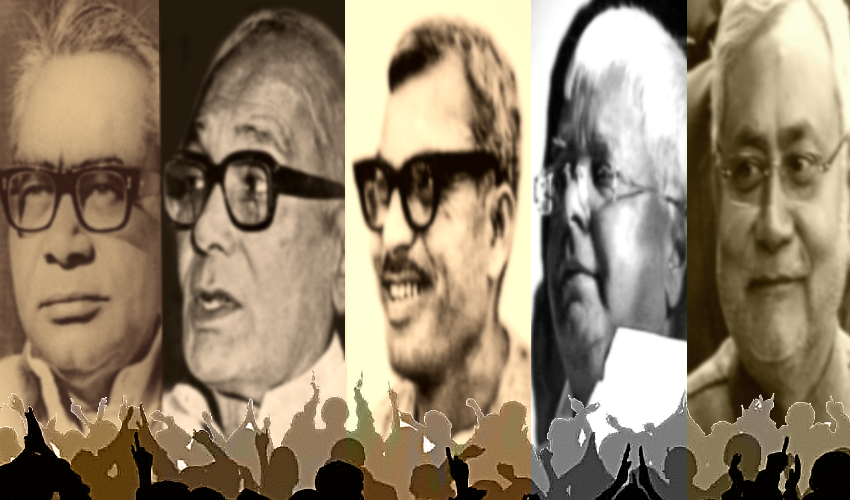There is a popular saying, what is the name? But to be told to be true, a lot is kept in the name. Especially the full name, which includes the title, because it reveals caste. When did the tradition of writing surname (degree) begin with the name? Nowadays people often introduce themselves by adding nicknames like Singh, Sharma, Sahay, Yadav, Mahato with their names. Did this happen in ancient times also? To know the answer to this question, when we turn the pages of history, we do not get anything like that.
There was no surname from Satyayuga to Tretayug and Dwapar Yuga
Now take the example of Ramayana or Mahabharata. The names of the characters of these texts are single. Like King Dasharatha. There is no surname after his name. He is identified only as King Dasharatha. Similarly, his four sons were known as Ram, Bharata, Lakshmana and Shatrughan. There is no surname even after his name. His name is the identity of his great personality. Similarly, there is no surname after the name of Guru Dronacharya in Mahabharata. Yudhishthira, Bhima, Arjuna, Nakula, Sahadeva also did not need any surname. There is no lack of such examples. Earlier there was a varna system in India. Classification of castes took place much later. In the Buddhist period, people started adding nicknames with their names based on their specialty. But it was not a symbol of caste. For example, if one is a knowledgeable of the four Vedas, he started writing Chaturvedi. In the Mughal period, new castes were born on the basis of labor. Even before the British arrived, there was a caste system in India, but it was not institutional and rigid.
The British strictly impose nicks on Indians
Professor Vidhu Shekhar has done a research on the surname system. When the British rule began in India, they started giving institutional form to caste and surname. When the British officials started having trouble with single names here for administrative and legal work, they started imposing the surname. British historians started the practice of nicknaming Indian kings or famous people on the basis of their clan and lineage. For agricultural records, police records, school enrollment etc., Indians were asked to tell their surnames. If they did not say their surname, they themselves used to ask for their tribes, business or other identity and decide the surname. Around 1890–95, the British authorities started emphasizing the Indian people to mention their caste, sub-caste, gotra, business etc. to enter the details on the documents. During the British rule, the practice of writing caste with the names and surnames of both sides on the document at the time of purchasing of land began. The British made the varna system and profession the basis of caste determination. He divided Indian society among thousands of castes for his benefit. The 1931 census mentions 4141 castes. Most of them are also surname with their names. The surnames were removed during the entire revolution.
In the modern era, the surname became a reason to appear for political reasons and sometimes hide. For example, in the 1974 movement, Jayaprakash Narayan gave the slogan of the entire revolution. This revolution was for justice and equality. At that time the slogan was raised- break the caste system, leave the tilak-dowry, give a new direction to the stream of society. After this, the people associated with this movement removed their surnames so that their caste would not be known.
Former Chief Minister Jagannath Mishra removed his surname
Sometimes he renounced the surname to make himself progressive. In 1980, Jagannath Mishra again became the Chief Minister of Bihar. As soon as he became the Chief Minister, he declared Urdu as the second official language in his first cabinet meeting. At that time, Urdu in India was recognized only as the official language in Jammu and Kashmir. This greatly increased their influence among the minorities. He then removed his ‘Mishra’ surname to make himself progressive. He only started writing Dr. Jagannath. Even government press releases were printed in the name of Dr. Jagannath.
Nickname Prasad but became famous as Lalu Yadav
The name is the identity of the person and the identity of his caste. But sometimes even the nickname does not detect caste. Lalu Prasad became the Chief Minister in 1990. His surname was Prasad but he became famous as Lalu Yadav. This helped him to handle politics. During his reign, caste politics took a fierce form. The people of the Yadav society who used to write only lions with their names, started adding Yadav with the name. When backwardness became a decisive factor in Bihar politics, the leaders of this class started adding caste surnames with their names. For example, for the first time in 1990, Shri Bhagwan Singh became an MLA from Jagdishpur seat from CPI Male (IPF). His name was Shri Bhagwan Singh in that election. Later when he joined JDU, he started writing Shri Bhagwan Singh Kush.
When people started hiding or removing their surname
But there is another aspect of the coin. After 1990, in the era of extremely backwardness, people of upper castes began to remove or hide their surnames. At that time social stress was at its peak. Castes were identified by asking the name. Incidents of violence started happening due to caste malice. To avoid this, people of upper castes started hiding their surnames. Keeping the future in mind, people started keeping their children’s names without nicknames. He believed that this would reduce caste discrimination. But now again politics has forced people to tell their caste even without surname. Two years ago, when the caste census took place in Bihar, there was a lot of difficulty in finding the caste due to lack of surname. Then had to ask the caste directly.










